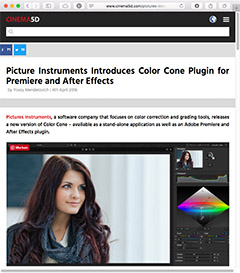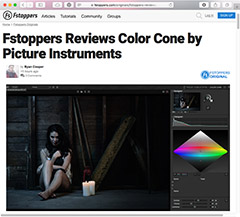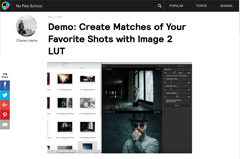In the Media
About balancing creativity and a safe income
"My gut instinct often helped me to succeed"
In the “Picture Instruments Customer Stories” we talk about the inspiring stories of our customers and partner companies who achieved their visions by using the “Picture Instruments Software”. Today Muhlis Gedik alias Moogo talks with us about his newest track “The Secret“, about the corresponding music video, and about balancing creativity and the need to earn money.
PI: Hi Muhlis, I’m glad that you took the time to tell me and our customers everything about your newest project.
Muhlis: Hi! Needless to say, I’m very thankful for your support with the production of the video for “The Secret” and I’m, of course, very happy to be able to present the result to the Picture Instruments Team and your customers.
PI: We already know each other since the time we both studied together and you’ve always been a creative guy, you’ve always made music and traveled a lot around the world. I heard, of course, that you’ve lived and worked in Australia and in London for a lengthy period of time, but we only came into closer contact again through your work on the video for “The Secret”. Why don’t you tell us a little bit about what you’ve done in all the years?
Muhlis: I completed my internship semester in the studio NuVu in Sydney as part of my media technology studies at the University of Applied Sciences in Düsseldorf. I kept working at that studio for one more year, after I finished my diploma thesis, because I liked the work and the city so much. Sydney is just great and has an amazing energy. After that I went to London, where I worked at Avid for 3 years. But I had a technical job there and realized that I would rather do creative work. So I followed my heart and came to Cologne and started to build up my own studio. But Barcelona was always a dream of mine, which I also realized someday. Now I already live in Barcelona for more than a year. Here I found the perfect work-life balance for myself. I’m in Cologne for one week every month, where I work for the WDR as an audio engineer and lecture at the SAE "measurement technology and room acoustics". This is an absolute luxury for me, because this way I can thoroughly work on my own projects during the 3 weeks that I’m in Barcelona where I can make use of my creativity.
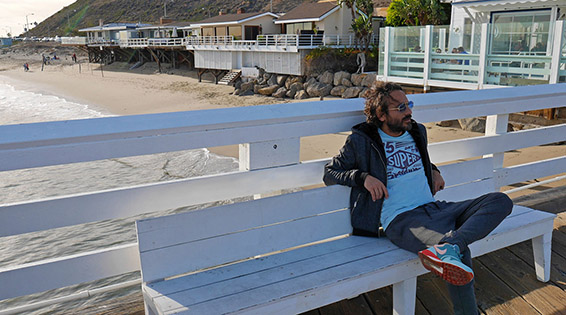
PI: Wow, it’s a real luxury and it sounds to me as if the message of this song has a close connection to your life.
Muhlis: Yes! Definitely! I’ve always followed my intuition in my life, but in the last years it was drowned out by the hustle and bustle of everyday life and my inner voice became quieter and quieter. So I made wrong decisions. I ignored the warning signs of my body and simply kept on going. I was more or less trapped in my everyday life. At some point I was sick all the time, I felt tired, was always in a bad mood and simply very unhappy. I didn’t go to the doctor, but I think you could call that a “depression”.
PI: Unfortunately burn out and depressions aren’t a rarity in our society anymore, but I have the feeling that people become more and more aware of the need to be more mindful with themselves and to take the necessary breaks to find themselves again. I’m very happy that you found a way for yourself to get out of that negative spiral. How did you get the idea for the story of “The Secret”?
Muhlis: As I just told you, I wasn’t in a good condition before I started to work on the song and I knew that I have to change something in my life, so that my inner voice can get louder again and guide me in the right direction. Many years ago I produced the song as an instrumental song and I stumbled on it, while I browsed through my archive. The track already touched me deeply and moved me with its driving groove the first time I listened to it. In that moment I thought: “This song deserves more than just being an instrumental song on an album” and I immediately had the vision to give the song more significance by using a rap that shakes you up.
PI: You didn’t rap yourself and brought the English artist Jermaine Bless on board for that. Did he also write the text?
Muhlis: Partly. I wrote the basic idea of the text. Jermaine could identify himself with the text immediately. He completed it by adding his own perspective and he optimized the whole text, so that it can be rapped better. Writing the text was very important for me at that time and it was also a part of my personal healing process. Every morning right after I wake up I write down all thoughts that I have on my mind and I’m already doing this for a long time. While working on my text, I remembered one of these morning pages that I wrote a half year ago on a murky winter morning. Back then I thought about the monotony that I and many other people are trapped in. In our stressful everyday life we often don’t hear our inner voice, even though we should listen more to our intuition. We often forget that we have control over our own life and that entrenched structures can be changed. If you are not happy then become active! Stop doing things that make you unhappy and start doing things that make you happy. You have control over all of your actions. I also took this to heart! Since I made the song and the video I also became more conscious in my everyday life and I'm “trying” to stay true to myself and my feelings. I’m deliberately saying that I’m “trying”, because it’s a process and it’s easy to revert back to old habits, but I’m continuously working on it and I notice that I’m feeling better this way.
PI: With the story in the back of my mind it’s even more motivating that you didn’t just get a lot of positive feedback for the song and for the video, but in my opinion you also have pretty good streaming numbers for a newcomer.
Muhlis: Yes, exactly! That confirms the message of the song and also shows that the people out there are ready to “wake up”. I didn’t create this project for economic reasons, but I still got a lot of views and a sponsor contacted me and helped to support the project financially after I showed it to a couple of people. I absolutely didn’t expect that and it’s really great. I just followed my intuition to give the people a “message” and after my creative success I then also received a little bit of financial support. That’s really a great feeling. I don’t want to do anything for money anymore, because that way the creativity moves into the background. The video is rather a proof that it can also work very well the opposite way. Do what makes you happy and what you’re good at. Do that with passion and with 200% motivation. Don’t let little setbacks and the gossip of others influence you. Get up one more time than you fall down and keep going, because then I’m absolutely sure that the money will follow your art and you won’t have to follow the money. That’s why I barely don’t accept any contract work. Meaning I only take a job if it’s touching me creatively and emotionally and if I really want to do it. I want to create something that corresponds to my idea of art and not just something with the aim to get as many clicks and as much profit as possible. The creative phase in the whole process, meaning the way to the goal is for me already the reward. The feeling to create something new can’t be compared with anything else.
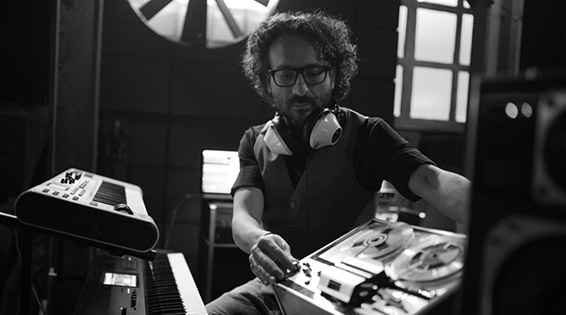
PI: I agree with you 100%. We don’t do anything else here at Picture Instruments. Most of our team, including myself, is more technically/mathematically minded, so our creativity is rather reflected in formulas, algorithms and program code, but we love what we do and our products are supposed to reflect that... How much does a limited budget restrict you with your projects?
Muhlis: The positive reactions show me that I’m on the right way and that a small budget shouldn’t be an obstacle. It’s the opposite, you have to become creative and you grow with the challenges. I could do a lot myself in the production chain and I was able to convince the creative team around me of the importance of the project, so that everyone gave 120% despite low honoraria. I appreciate that a lot and I’m very grateful for that.
PI: Can you tell us a little bit about the creation of the video?
Muhlis: I already had a certain vision and look in my mind, as it’s often the case when I create a video, and I also knew that I wanted to work with 3D animations. But I never make up my mind completely, because that way many ideas get lost that could have been way better. We headed out 3 times and filmed different sequences that emphasize the mood of the song. By using your Picture Instruments Plugins we were able to realize the look that I had on my mind right away. We were also thrilled how smooth your plugins work. I had a limited budget, so I wasn’t able to use high-end cameras from Arri or Red (even though I would have liked to use them) and had to make sure that compression artifacts at the color grading won’t show too much, especially because we also had mobile phone recordings. Your plugins worked really well compared to the integrated solutions. For example in the past we masked the skin tones through the secondaries, which created more artifacts and also took a longer time. We also put in a lot of work into the post-processing, after the basic framework was done and the 3D animations were ready. For example keying, time lapse, video effects, etc. Luckily we could use your plugins in After Effects, because without After Effects all of it wouldn’t have been possible and without the proper integration of your plugins it would have become really cumbersome… I didn’t want to say impossible, because there’s always a solution (laughs).
PI: That sounds like a lot of stamina, despite the help of our plugins.
Muhlis: That’s true :-) I was able to do a lot myself, but a lot is still dependent on other people and external circumstances that you can’t influence directly. The obstacles or failures can be disappointing or simply very frustrating. At some point I was also ready to quit, so you really need perseverance and you can’t lose sight of your goal. In such moments I then told myself that it’s possible to reach that goal. That gave me strength again and strengthened me internally.
PI: Let’s get back to the color grading for a moment. Do you want to tell us how you achieved that look?
Muhlis: Sure, it’s no secret (laughs). Besides, I gladly share my knowledge. That’s roughly how long it took the first time (laughs). Take a look yourself. I brought a little scene with me:
PI: We’ve already talked about some important aspects, but it’s the team that makes or breaks a good idea. How did you assemble your team?
Muhlis: I worked for many years in the music industry, so I build up a good network, I know many people, and I also maintain these contacts. For this project we had an international team from Barcelona, Hamburg, Cologne and Istanbul. Of course I also talk with my friends and acquaintances about my projects, so this is for example how I found the rapper for the song. Before Jermaine I already tried to work with 3 other rappers, which didn’t work out for different reasons. I talked about this with an old colleague from my time at Avid and he introduced me to Bless after that. By the way this is also kind of how it worked in our case :-) We met during our studies and since then we kept in sporadic contact. During my time at Avid in London I discovered your “Brainworx Plugins” in the “Avid Plugin Pool” and I was very impressed and of course also proud of you. It’s already a couple of years since you built Brainworx together with Dirk. Now, a couple of years later, I can say the same thing about your “Picture Instruments Photo and Video Editing Software”.
PI: Yes, thank you! I’m glad that I could help you and that Warping Wheels and also Color Cone makes your workflow in the post-production more efficient. But a 1000 words don’t do the result justice. I mean the clip speaks for itself. You really did a great job. Congratulations! And what’s next for you now, what are your next projects?
Muhlis: Right now I’m working on several projects from different genres at the same time. I work on all of them passionately, so I couldn’t decide yet which one I want to finish first. Right now I’m focused mostly on an Electro project. Maybe I’ll be able to release the EP this year. I’ll decide along the way which project I’ll spend more time on. And the motto in this case is as always: Follow your inner voice :-)
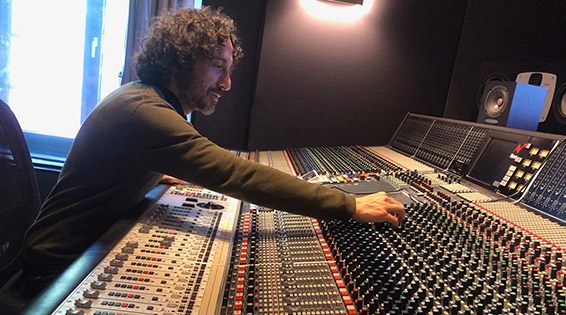
PI: Thank you for taking the time. I’m looking forward to hearing from you soon again and I wish you a lot of success for your next projects!
Muhlis: Thank you! It’s a lot of fun to talk to you and I hope that I hear from you soon again.
You’ll get a complete overview of the work of Muhlis Gedik on mg-grooves.com and soundshaper.de or Instagram and Facebook!
Do you deal with color grading at the moment and do you want to test the software that Muhlis talked about in the interview? Then download the free test versions of our color grading software.
Try out Color Cone now.
Try out Warping Wheels now.
Try out LUT Mixer now.



